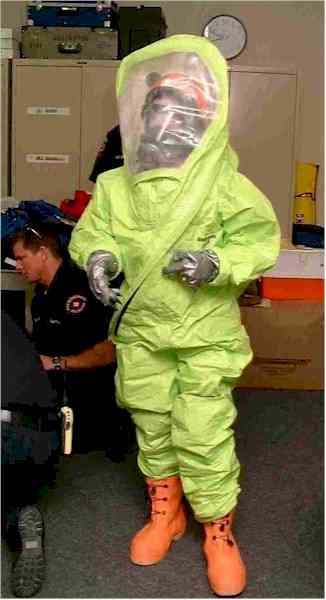More cravenette info
Snipped from United States Patent 3655422 :
"The water repellent applied to the fabrics illustrated herein is not particularly important. Accordingly, any of the known water repellents can be employed, through fluoro chemicals such as those manufactured by the 3M Company and designated as FC-805, FC-808, and FC-817 have been found to be particularly effective. However, examples of other useful repellents include wax dispersions such as "Cravenette" N-15, and "Impregnole" SP and FH and pyridinium repellents such as Cravenette GIQ. Other examples of useful water repellents are given in the "American Dyestuff Reporter," 58 (20): 15-19, 45 (Oct. 6, 1969). As indicated previously, the repellent is usually applied to the fabric as a water solution or dispersion and, after application, the fabric is dried. While, with respect to many water repellents, drying under the conditions recited above is adequate to develop their repellency characteristics, it is also frequently desirable to further cure a repellent. Curing at about 350° F. for 10-30 seconds is usually sufficient to fully develop repellency properties, through, with respect to some, curing for up to about 5 minutes or more is needed. Curing can also result in economy in water repellent use. "
http://www.sumobrain.com/patents/2448247-abstract.html
http://www.cs.arizona.edu/patterns/weaving/articles/twr_nov.pdf
http://www.bio-rad.com/pages/SAD/V2/dbinfo/index4203.pdf
B
Snipped from United States Patent 3655422 :
"The water repellent applied to the fabrics illustrated herein is not particularly important. Accordingly, any of the known water repellents can be employed, through fluoro chemicals such as those manufactured by the 3M Company and designated as FC-805, FC-808, and FC-817 have been found to be particularly effective. However, examples of other useful repellents include wax dispersions such as "Cravenette" N-15, and "Impregnole" SP and FH and pyridinium repellents such as Cravenette GIQ. Other examples of useful water repellents are given in the "American Dyestuff Reporter," 58 (20): 15-19, 45 (Oct. 6, 1969). As indicated previously, the repellent is usually applied to the fabric as a water solution or dispersion and, after application, the fabric is dried. While, with respect to many water repellents, drying under the conditions recited above is adequate to develop their repellency characteristics, it is also frequently desirable to further cure a repellent. Curing at about 350° F. for 10-30 seconds is usually sufficient to fully develop repellency properties, through, with respect to some, curing for up to about 5 minutes or more is needed. Curing can also result in economy in water repellent use. "
http://www.sumobrain.com/patents/2448247-abstract.html
http://www.cs.arizona.edu/patterns/weaving/articles/twr_nov.pdf
http://www.bio-rad.com/pages/SAD/V2/dbinfo/index4203.pdf
B



